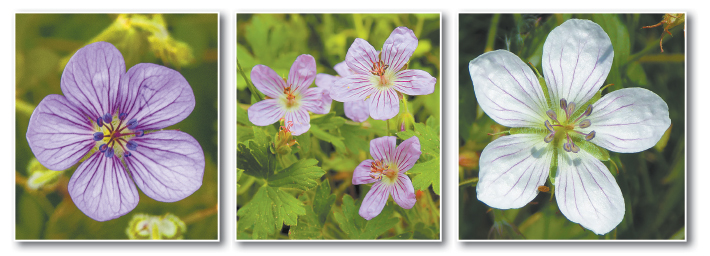Richardson’s Geranium
After a short hiatus for Covid-19, it is time to continue my discussion and description of various range plants that are of interest to the ranching community in Nevada and surrounding area.
For this issue I propose to describe another forb. Recall that forbs are flowering, nongrassy “herbaceous” plants, which means they produce seeds and have stems and leaves that die back at the end of each growing season (versus woody plants, whose stems remain year after year). Informally, forbs are what many call wildflowers. These plans individually do not provide considerable forage and while we do not spend much time on many of the forbs they overall make up a significant proportion of our range vegetation complex.
For this issue I describe a plant commonly known as Richardson’s Geranium. Geranium richardsonii Fisch and Trautv. is native to western North America from Alaska to New Mexico, where it can be found in a number of habitats, especially mountains and forests.
Geranium comes from the Greek geranos, “crane,” from the beak-like fruit. It is a member of the Geraniaceae family and is a perennial herb varying in maximum height from 20 to 80 centimeters. (The term “herb” refers to any seed-bearing plant that does not have a woody stem and dies down to the ground after flowering. As an aside, the banana plant is considered to be the world’s largest herb.)
Richardson’s Geranium plants have a tough, woody taproot and older plants develop rhizomes. The leaves are up to 15 centimeters wide and are divided into generally five segments, each segment subdivided into small rounded or pointed lobes.
The flower has five pointed sepals beneath five rounded petals, each one to two centimeters long. The petals are white to purple with darker purple veining. The fruit has a small body with a straight style up to 2.5 centimeters in length.
Richardson’s geranium occurs in a variety of habitats including woodlands, forest openings, grasslands, meadows, and riparian areas such as stream terraces, alluvial benches, wet valley bottoms, and stream and lake margins. It is most commonly found in moist areas.
Richardson’s geranium grows best on moist to semi-wet soils with good drainage. It is moderately tolerant of drought. It grows best on loam, sandy loam, and clayey-loam soils derived from shale and limestone, but occurs on gravelly substrates as well.
Richardson’s geranium occurs in both seral and climax communities. It is shade tolerant, but also grows in some open habitats. It can be classified as facultative wetland species or facultative upland.
A facultative species refers generally to a species that can occur both in wetlands and uplands. Richardson’s geranium is a common understory species in aspen communities. It is a facultative species in aspen and Douglas-fir forests of Utah, Richardson’s geranium is present in seral stands of lodgepole pine.
Richardson’s geranium is a valuable forage species for livestock. It provides forage for mule deer in wet meadows.
The nutritional value of Richardson’s geranium is rated good to excellent for cattle and sheep during early growth stages, and poor to good in later growth stages. Plants can withstand heavy grazing by cattle because of its stout woody taproot.
One study showed this species to be an increaser species and dominant forb on cattle-grazed rangelands in Utah, although Richardson’s geranium decreases on sheep-grazed rangelands.
Richardson’s geranium is utilized by deer, elk, pronghorn, upland game birds, passerine birds, waterfowl, and small mammals.
Palatability of Richardson’s geranium is rated good for sheep and fair for cattle and horses.
Richardson’s geranium is rated good in nutritional value for elk and mule deer, and poor for pronghorn and waterfowl, and fair for small mammals, small nongame birds, and upland game birds. Energy rating and protein content are generally poor.
By Paul T. Tueller, Ph.D., CRMC

